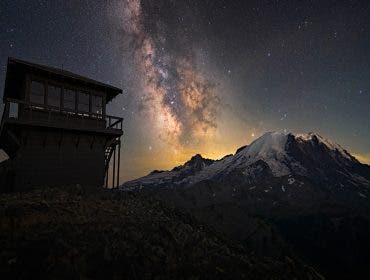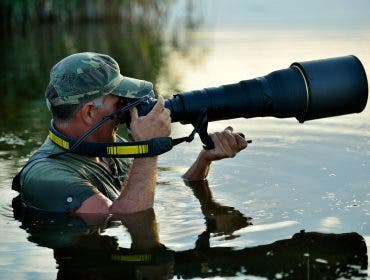Bird photography is demanding when it comes to gear, whether you are a beginner or a professional. As much as you love birds and know your way around them, you won’t be able to capture those great moments without the right camera and lens combo. And quality comes at a price. Furthermore, as a beginner, you have no experience and a limited budget, which leaves no room for mistakes.
You must think long-term and find the camera and lens combo that matches your current skill level. However, the camera and lens should also help you improve and grow as a photographer. Take the time to do proper research beforehand and buy the right camera and lens combo for bird photography. Ideally, one that will be happily and successfully used for years. Here is how to choose it.
Keep in mind that bird photography is incredibly demanding. As such, much of the gear we will recommend is top-of-the-line. This can create a barrier to entry for some, so we have added a couple of lower-budget (but still very good) options for those who may not be ready to invest fully in professional lenses.
Features to Look for in a Beginner Camera and Lens Combo for Bird Photography
Have your subjects in mind throughout the decision-making process. Consider their behavior and habitat and the way your interaction usually goes. Birds are unpredictable, almost always in motion, and especially good at hiding. Your camera and lens combo must be able to cope with this and provide the best experience for both the photographer and the subject. Check out the camera and lens features you may want to pay extra attention to when you have bird photography in mind.
Camera: Cropped Versus Full-Frame Sensor
Many bird and wildlife photographers prefer a cropped sensor because of its magnification factor. The APS-C crop factor is 1.5, which means that a 200mm focal length will act as a 300mm focal length on a cropped sensor. The Micro Four Thirds crop factor is 2.0. As a result, the bird will fill the frame, looking bigger and more impressive. And, due to modern technology, cropped sensor cameras provide high resolutions, wide dynamic ranges, and accurate colors and details.

However, a cropped sensor is, by definition, smaller than a full-frame sensor. Therefore, the full-frame sensor is superior in terms of low-light performance and overall image quality. The same magnification given by a cropped sensor can be achieved by enlarging and cropping a full-frame photograph in post-processing. So, as long as you get a full-frame camera with a lot of megapixels, you are on the right track.
As a beginner, you should consider other differences as well, such as the price (full-frame cameras are more expensive) and the weight (full-frame cameras are heavier). If shooting at high ISO values and large prints isn’t something you often do, go for a cropped sensor camera.
Camera: ISO Performance
I find that prioritizing shutter speed is often the key to a good bird photograph. A fast shutter speed freezes motion and allows me to capture sharp details and impressive colors of birds in flight. To maintain the level of detail and produce correctly exposed images, I tend to increase the ISO value, especially when I chase that special golden hour light.
Thus, a camera with good ISO performance will help you along the way. The camera you choose for bird photography should perform impeccably, at least at ISO 2500.

Camera: Burst Mode Capabilities
For panning and following focus, you need a camera able to take shots rapidly and silently. Therefore, it’s important to know how many photographs the camera can take in a burst. High-quality cameras go as high as 20 frames per second (fps), allowing you to capture wing swings, unique movements, and expressive poses. Remember, birds don’t wait for you. Everything happens in a split second.
A fast camera needs to be paired with a fast memory card able to store a large amount of data, especially if you shoot in RAW.

Camera: Animal Focus Tracking
Also, for panning and follow focus, you can rely on autofocus only when the camera can recognize and track birds. As not all cameras can do that, it is worth looking for one that does. It is useful for birds in motion, whether they are flying, running, or jumping around.
Alternatively, I find having a back button focus useful. It locks the focus and allows me to follow a subject without keeping the shutter pressed and risking accidentally refocusing.

Lens: Telephoto Focal Length
A telephoto lens has a focal length longer than 100mm. A super-telephoto lens has a focal length longer than 300mm. Depending on what bird species you want to photograph, you will need at least a 200mm lens. For small or faraway birds, a 500mm or 600mm may be necessary.
Don’t forget about the crop factor. Suppose you pair a cropped sensor camera with a telephoto lens. In that case, you may only need a 400mm lens to achieve the same result you would get using a full-frame camera and a 600mm lens.

Lens: USM
USM stands for ultrasonic motor and refers to how much noise the lens’ focusing system makes. This is important for bird photography because you don’t want to startle the birds. The camera and lens combo needs to be as silent as possible (as have to be the photo accessories, your clothing, and yourself).
USM lenses make the lowest noise and provide the fastest autofocus of all lenses, which makes them often recommended for wildlife photography.

Lens: Built-in Image Stabilization
You want optical image stabilization in the lens because it helps you avoid camera shake blur, especially when you handhold the camera and lens combo. Telephoto lenses are heavy, and even when you opt for a lightweight camera, you will still have difficulties holding the combo. Furthermore, telephoto lenses create a narrow depth of field, which makes missing the focus point very easy. You want the most stabilization you can get.
However, keep in mind that using a lens with built-in stabilization doesn’t mean you can forget about the tripod. Two of my best tips for beginner bird photography are being stationary and using a tripod.
Lens: Dust and Water Resistance
A high-quality telephoto lens is key in bird photography. My advice is to pay more for a high-end lens and take good care of it. As a result, I tend to look for lenses that are dust and water-resistant, provide a solid build quality, and have good reviews for heavy usage. Bird photography will take you to remote natural areas in all sorts of weather conditions. You’ll lay on the ground to get your camera to the bird’s eye level, shoot in the rain, and walk through swamps. Make sure your camera and lens combo is robust and well-protected.
Top Choices for Camera and Lens Combo for Bird Photography
It’s difficult to create a go-to list of camera and lens combos for a beginner in bird photography because new camera and lens models appear every year. However, here are my top choices for the moment. While some of these might strain your budget, these combinations allow you to grow as a photographer and take your bird photography beyond the beginner level. All that without constantly having to invest in new gear. You can use them as a reference and compare any new models that may appear to make sure they offer at least the same features if not more.
Nikon Z8 and Nikon 500mm f/5.6E PF ED AF-S NIKKOR VR Lens
The AF-S NIKKOR 500mm f/5.6E PF ED VR is as lightweight and compact as a full-frame 500mm lens can be. This lens is designed for wildlife and action photography. It is packed with VR image stabilization, a fast and silent autofocus motor, a short minimum focusing distance, and a Fluorine Coating to repel water, dirt, and grime. It also features the Phase Fresnel (PF) technology, which reduces chromatic aberrations and ghosting, producing amazing details and colors and the ideal blurred background you want when photographing birds.
Pair it with a mirrorless full-frame Z8 or Z9 camera, and you get a combo you won’t need to change very soon. Even though you may be a beginner, this camera and lens combo will set you well on the path from beginner to professional bird photography.
OM SYSTEM OM-1 Mirrorless Camera with OM SYSTEM M.Zuiko Digital ED 40-150mm f/4.0 Pro Lens
This is the ideal camera and lens combo for a beginner because it is affordable, portable, and versatile. The OM-1 mirrorless camera is lightweight, compact, and easy to handhold. It has a fast autofocus system that’s able to track birds, a wide ISO range, built-in image stabilization, and continuous shooting at 120fps. The Micro Four Thirds sensor produces 20MP resolution RAW images.
The M.Zuiko Digital ED 40-150mm f/4.0 Pro is a zoom lens with an equivalent focal length range of 80-300mm. Therefore, it is versatile and allows you to experiment and learn bird photography without overwhelming the budget. The lens features built-in image stabilization, a fast and silent autofocus system, and a protective fluorine coating. It’s designed to last and inspire.
Canon R5 or R7 and Canon RF 400mm f/2.8 L IS USM Lens
The RF 400mm f/2.8 L IS USM is a super-telephoto lens designed for wildlife and action photography that packs Canon’s technology in terms of optical image stabilization and USM. It features a short minimum focusing distance, a wide maximum aperture, two focus presets, special coatings for reducing flares and ghosting, and fluorine coating to resist water and dust.
You can pair it with a Canon R5 or R7 full-frame mirrorless camera. They include built-in image stabilization, autofocus with bird detection, powerful image processors, high performance in low lighting conditions, an impressive ISO range, and more. If the price tag for this combination is too high, begin with a more affordable lens like the Canon RF 100-500mm F4.5-7.1L IS USM Lens, which also gives you great results.
Sigma 60-600mm f/4.5-6.3 DG OS HSM Sports Lens for Nikon F
Sigma has designed an entire line of lenses around sports photography. These lenses can be great options for bird photography. While the Sigma 60-600mm f/4.5-6.3 DG OS HSM Sports Lens for Nikon F is on the slower side of what we’d ideally want, the huge zoom range and Intelligent OS Image Stabilization give a bird photographer a lot of lenses to work with at a nice price point.
Pre-Owned Cameras
Camera technology is evolving rapidly. Many photographers are using amazing camera bodies in pursuit of the latest and greatest. You can benefit from this by checking out Adorama’s wide range of Pre-Owned cameras.
Conclusion
Great gear is important for bird photography, but that doesn’t mean you need all the lenses and accessories. Choose the right camera and lens combo for your workflow and add accessories in time. Focus on technique, composition, and finding your artistic voice as a bird photographer. And invest in high-end photo gear that you can rely on for a long time.






